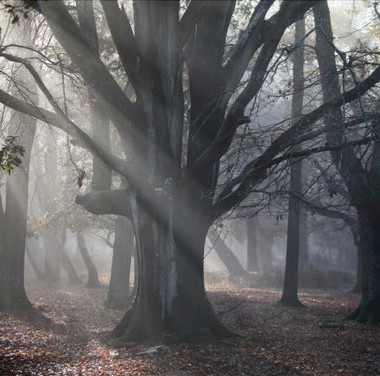A-Z
Bottom
Bottom is an old word for a valley floor. There are several strangely named bottoms in the New Forest, including Dead Man’s Bottom and even Slap Bottom!
Boiling mounds
Boiling mounds are ancient piles of flint that have been heated by fire. The mounds are found near sources of water, sometimes next to shallow hollows in the ground. The theory is that they were used by our ancestors to boil water. The flints would have been put in a fire until they were very hot, then dropped into the water in the hollow. Boiling mounds are common across the Forest.
Ants
There are about fifty types of ant in the UK, and more than half can be found in the New Forest.
The Southern Wood Ant creates huge nests among the trees in the Forest, made out of pine needles, leaves and twigs. The nests can be a metre or two across. Be careful not to get too close, as the ants spray formic acid when they feel threatened, and they can bite.
The New Forest is also home to the rare Bog Ant which spends its life in and around some of the Forest bogs.
Adjacent Common
See ‘Crown Land and Adjacent Commons’
Ancient and Ornamental areas
or A&O areas, are parts of the Forest that contain particularly old and impressive trees.  There are special rules for how the A&O areas are managed.
There are special rules for how the A&O areas are managed.
Some of the trees in the A&O areas are ‘pollards’, which means that their trunks were once cut across at about head height. Pollarding makes lots of new branches grow where the trunk is cut, and also makes the trunk grow very thick.
If you see a pollard oak it must be well over 300 years old, because pollarding oaks in the New Forest was banned in 1698 by Parliament. The New Forest was an important source of wood for building ships for the navy, and pollarding was causing a shortage of long timbers.

